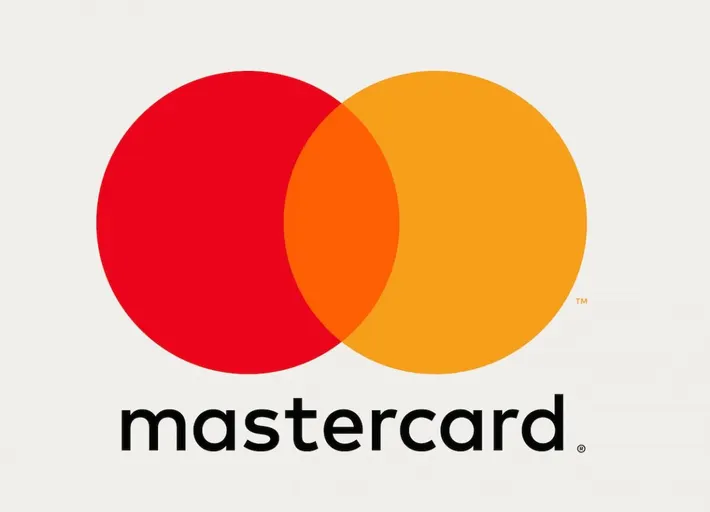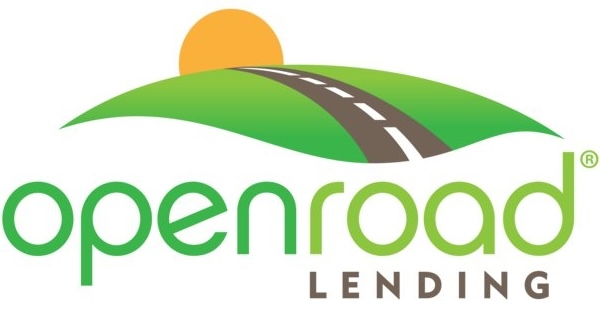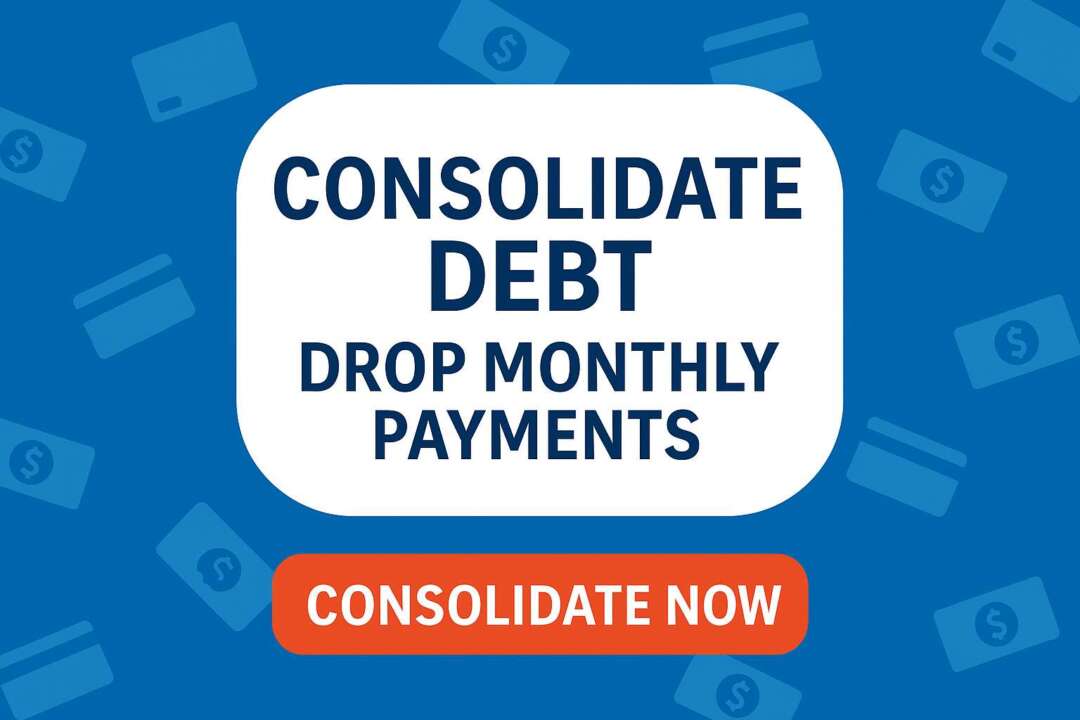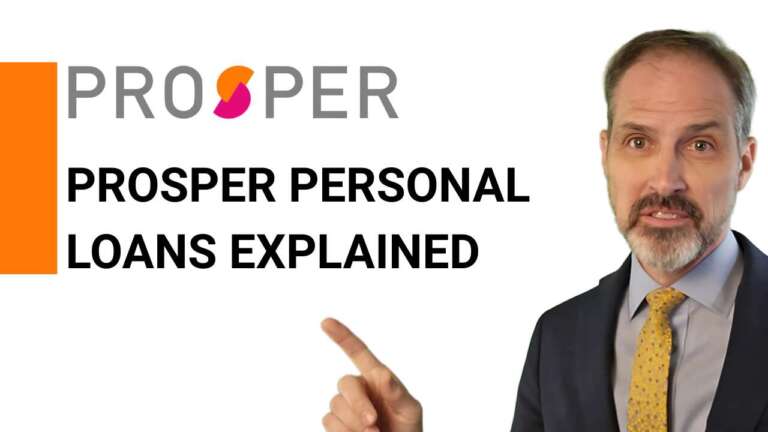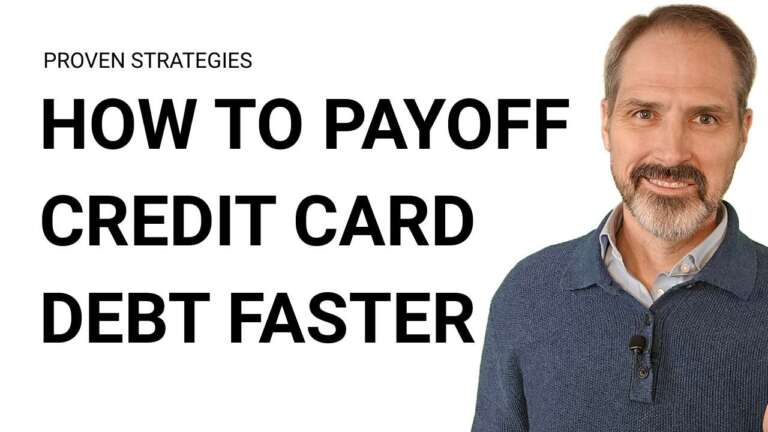
Full breakdown of what you need to do to get a personal loan.
The complete guide to what you should do during the process of considering, shopping for, accepting, and paying off a personal loan.
Personal loan checklist
- Before you apply
- Determine how much money you need
- Determine how much you can afford to pay
- (Optional) Know your credit score
- Gather needed information
- Name
- Street address
- Email address
- SSN
- Annual income
- Bank account routing information
- Bank account access
- Co-borrowing information (if applicable)
- When you are applying
- Shop for lenders
- Current financial institutions
- Online lenders
- Storefronts
- Non-bank lenders
- Credit matching services (check ours out here)
- Check company reviews
- Apply with lenders
- Rate shopping doesn’t hurt your credit score
- Always apply with at least three lenders to ensure you get the best terms
- Shop for lenders
- Before you accept the loan
- Review terms and conditions
- What is the annual percentage rate (APR)?
- Does it have an origination fee?
- Review the “truth in lending” box to see what the total interest and fees will be over the life of the loan.
- Is the length of the term what you expect?
- Highlight any other fees mentioned
- Early termination / prepayment penalties
- Late fees
- Compare costs of multiple offers loans
- Total interest and fees
- Length of term
- Other fees: which are mentioned, which are avoidable, which are unavoidable
- Application fee
- Origination fee
- Document preparation fee
- Annual fee
- Payment processing fee
- Check processing fee
- ACH transfer fee
- Wire transfer fee
- Early termination / prepayment penalties
- Servicing fee
- Late fees
- Is there a grace period?
- Does the company require you to get insurance?
- Can you waive the requirement?
- How much does it add to your monthly payment?
- Review terms and conditions
- As you are paying the loan off
- Set up autopayments
- Regularly review credit report
- Plan to make extra payments
- Contact your lender if you run into issues
- Save payment verification information
- After you have paid off the loan
- Reallocate that payment to another debt or to savings
- Review credit report
Notes on the checklist
Before you apply
Determine how much money you need before you apply for a personal loan
Before you’re faced with an offer from a lender for money, you need to determine for yourself how much you need. You need enough to solve your issue, but not more than you need. If you get too little, you may not actually accomplish what’s needed that might lead to more problems. If you borrow too much, you could put yourself deeper in debt than is necessary and you will be paying more interest than you need.
Something to know: Lending laws and licenses vary by state and in many cases there are minimum amounts lenders can offer. If you need less than the minimum offered, you can accept a larger amount and then repay the excess immediately. If the loan charges a simple interest, you will incur very little interest expense based on only a couple of days of holding the higher amount. However, the cost of the loan may be impacted by an origination fee (common) or early repayment fee (uncommon).
Determine how much you can afford to pay before you apply for a personal loan
Take a hard look at your month-to-month finances to determine how much you can afford to pay. If you accept a loan but cannot afford the payments, you will be in a worse situation that you were before you started. You should be sure you can meet the repayment plan for the loan before starting. Understanding what your monthly payment needs to be will be important later when you are assessing which loan to accept.
Something to know: Most lenders will assess whether they think you can afford the loan, but their calculations don’t have the knowledge you do about your finances. They are unlikely to see the infrequent expenses or unpredictable income that comes up. Don’t rely on the lender to determine whether you can afford a payment.
Before you apply for a personal loan, you might want to review your credit score (Optional)
When you apply for a personal loan, the lender will pull your credit report for you. There’s no real reason why you need to pull your credit report or understand what your credit score is before you apply for a personal loan. However, it can be valuable to give yourself a sense for what kind of loan you might be qualified for. The credit score is highly correlated to the cost of a personal loan that you can qualify for, so if you have a strong credit score you have many more options for the kinds of personal loans you could qualify for. That being said, it’s impossible to know what you would be approved for without applying.
Something to know: A lender will never tell you whether they think you might pass their underwriting standards. The only way to know for sure is to apply. The reason for that is that the lender can be penalized if it looks like they are discouraging people from applying, especially if those people are from a legally protected class.
What information should you gather before applying for a personal loan?
There’s some basic information that you will need when applying for a personal loan regardless of who you apply with. Most of the information you need will be right off the top of your head, but there is other information like bank account routing information that you will need in order to complete your application. Having everything you need in hand before you apply will make things much easier.
You will need the following information:
- Name
- Street address
- Email address
- SSN
- Annual income
- Bank account routing information
- Bank account access
- Co-borrowing information (if applicable) You will only need co-borrowers information if you will have another name on the loan.
Something to know: More lenders are asking for access to bank account login information in order to underwrite based on cash flow, income, and expenses, rather than just what’s on a credit report. After giving a lender access to your bank account credentials, you can immediately change your password as a security precaution.
When looking for a personal loan, always shop for lenders
Financial services is a very competitive industry right now and it makes a lot of sense to ensure that you shop around to get the best loan that you can qualify for.
The following are types of Institutions that provide personal loans that you might consider when making an application:
- Current financial institutions
- Online lenders
- Storefronts
- Non-bank lenders
- Credit matching services (check ours out here)
- Check company reviews
Before applying with a lender you’ve never heard of before, check to see who the actual lender is. At the bottom of a website (the footer), you will be able to see who the actual lender is. Sometimes, the brand may not be familiar. If the lender is an FDIC insured bank then you will be able to see that in the footer. If the disclosure at the bottom says that they are not a lender, they are an “aggregator” and are moving your application to a lender.
Something to know: The Yukon Project’s credit matching service will allow you to input your information once and to receive offers from many different lenders. It is an easy way to shop around for the best option.
What you should do when applying for a personal loan
There are many types of institutions that provide personal loans. Some of them you would recognize and are household names. Others are very small institutions that you may have never heard of. Name recognition does not necessarily mean you will get the best deal or service. It’s important to do a little bit of research on the institutions that you might consider applying to.
One of the most important things you can do is read online reviews of the different institutions. While an overall star average is useful, even more important is to read what previous customers say about their experience with the lender. Their words can often help you understand whether they provide the customer service you would expect and whether there are any fees that catch customers by surprise.
There are companies that do reviews like Trustpilot or you can just check Google reviews. You can also review the Consumer Financial Protection Bureau’s consumer complaint database for complaints against the company you are considering.
Something to know: Rate shopping doesn’t hurt your credit score. Even if every lender that you apply with makes a hard inquiry on your credit report. The credit scoring agencies view multiple hard inquiries in a very short time like a single inquiry. They do not want to penalize people for shopping around for the best rates. Even better, most lenders these days only do a hard inquiry when you accept their offer. Most initial underwriting processes utilize a soft inquiry process that isn’t used in credit scores.
What you should do before you accept a personal loan
How to review the terms and conditions of a personal loan
Before you accept a loan, it’s really important that you review the terms and conditions. This is far more serious than the terms and conditions on a website that most of us just click and ignore. The terms and conditions in a lending agreement will talk about interest rates, fees, and other policies that are important to understand before you get the loan. It can be really boring reading, but it’s essential to at least understand the details of the agreement.
When you’re looking at the terms and conditions pay particular attention to the following things:
- APR (annual percentage rate)
- Origination fees
- Total interest and fees
- Length of term
- Other fees
- Early termination / prepayment penalties
- Late fees
Something to know: Members of The Yukon Project can request a review of your terms and conditions. While we won’t tell you what to do, we can tell you whether the terms are similar to other companies or if there is anything that you ought to be cautious of. You can find the information here.
How to compare the costs of multiple personal loan offers
By law, lenders are required to present you with a TILA (“Truth in Lending Act”) box when they make you an offer of credit. This Truth in Lending Act requirement shows the APR (annual percentage rate), the payment amount, the term length, and the total interest paid if the loan is taken to full term.
Comparing TILA boxes of different loan offers can be a quick shorthand to understand the cost of each loan. It’s a good start, but it is not enough to really understand the differences in the lending offers.
You will specifically want to compare the following things with all of the offers given to you:
- Total interest and fees
- Length of term
- Other fees
- Application fee
- Origination fee
- Document preparation fee
- Annual fee
- Payment processing fee
- Check processing fee
- ACH transfer fee
- Wire transfer fee
- Early termination / prepayment penalties
- Servicing fee
- Late fees
- Is there a grace period?
All the fees that a lender might charge for a personal loan
As you are reviewing the different fees that a loan might carry, you should pay particular attention to whether the fee is unavoidable. If it is unavoidable, the fee should be stated in the total cost of the loan mentioned at the top of the offer. The more dangerous fees are ones that are not mandatory, but very hard to avoid because these won’t be mentioned in the total cost of the loan, but will likely add to the cost of the loan for you over the course of the term.
- Origination fee: This fee covers the cost of processing and underwriting the loan. It’s typically a percentage of the loan amount and is usually deducted from the loan proceeds. That means, if there is a 10% loan origination fee and you borrow $1,000, the company will only deposit $900 into your account.
- Application fee: Some lenders charge a fee when you apply for a personal loan. This fee is usually non-refundable, whether or not your loan application is approved. None of the lenders on The Yukon Project’s comparison page charge an up-front application fee, so it will not cost you anything to see if you are approved.
- Document preparation fee: This fee may cover the cost of preparing loan documents and is more common for secured loans like mortgages. The document preparation fee is uncommon in personal loans.
- Late payment fee: If you miss a scheduled payment or pay after the due date, the lender may charge a late payment fee. While the most common late payment is a flat rate (for instance, $15 for not making a payment by the due date), you could be charged a tiered rate depending on how late the payment is. Even if you have a grace period for late payments, some lenders may still charge a late fee if you make a payment during this period. You will want to understand if a late fee is charged and what will trigger it.
- Prepayment penalty: Some loans have prepayment penalties if you pay off the loan before the agreed-upon term. This fee is designed to compensate the lender for potential lost interest.
- Check processing or ACH transfer fee: If you make payments by check or automated clearing house (ACH) transfer, the lender may charge a fee for processing these payments.
- Returned payment fee: If a payment is returned due to insufficient funds or other reasons, the lender may charge a returned payment fee.
- Wire transfer fee: If you need to send a payment via wire transfer, the lender may charge a fee for this service. You should also be aware the your bank may charge you to execute a wire transfer. If you plan on making payments by wire transfer, it could increase each payment amount even though that cost is not mentioned in the loan terms.
- Annual fee: While less common for personal loans, some lenders charge an annual fee for maintaining the loan account. If a lender charged an annual fee, it is a way to make more money without raising an interest rate. Since it is part of the overall cost of the loan, though, you should look out for it when comparing offers from different lenders.
- Servicing fee: Some lenders charge a monthly servicing fee for maintaining and managing your loan account.
Something to know: The Yukon Project conducts reviews of financial services companies. You can check to see if we’ve reviewed any of the companies you are considering here. Members of The Yukon Project can request reviews of companies. You can become a member of The Yukon Project with the form at the bottom of the page.
As you are paying of the personal loan
Set up autopay for your personal loan payments
Once you’ve taken the loan, the most important thing you can do is to set up auto payments from your bank. The reason you want to do that is to ensure that you never miss a payment. Always being on-time with your payments means you avoid late fees and you will be reported positively to the credit bureaus. If you had damaged credit when you got the loan, always being on-time with your payments should provide positive marks towards improving your credit score.
Something to know: It’s important to recognize that credit scores are incredibly complicated and there is no guaranteed way of knowing what will happen to your score based on your performance, but since payment history is the single most important factor in your credit score, making sure that you’re always on time is essential to building a great score.
Regularly review credit report while you are paying off your personal loan
When you have a loan, it’s important to periodically review your credit report so that you can be sure that what is being reported to the credit bureaus is accurate information.
Something to know: There’s always a lag of one to two months between actions performed in the real world and when they show up on a credit report.
Plan to make extra payments on your personal loan
One of the most important things you can do at the outset is to make a plan for when, how often, and how much extra payments you can make towards your loan. Thinking ahead is one of the most reliable indicators of being able to successfully get out of debt quickly.
Extra payments do not need to be the size of a regular payment. You can apply additional money in any amount. When you make an extra payment, you need to understand how it is applied to your account. If the extra payment is being applied to your next payment, it will not accelerate your debt payoff. All it will do is get you “ahead” on your regular payments. If your extra payment is applied to principal, it will accelerate your debt payoff and save you money on interest. However, it will not keep you from being late on your next payment if you fail to pay on-time.
It is recommended that you make extra payments to the principal, because that is the only way you will get out of debt faster. However, you should not make extra payments if it jeopardizes your ability to make your regularly scheduled payment.
As you pay off your loan, you will want to make sure that you stay current on your payments. Late payments reported to the credit bureaus will hurt your credit score and could make borrowing more expensive.
Something to know: Making extra payments early in loan will save you money and interest expense over the course of the loan and shorten the term of your loan. The earlier you can make extra payments, the better.
Contact your lender if you run into issues making your personal loan payments
If you hit a month where you cannot make your payment, the most important thing you should do is reach out to your lender. Too many people feel ashamed about being late and would like to just ignore the issue. But lenders want to get paid back and so they are often willing to work with you. Some lenders will allow you to push a payment or restructure the loan. Some will even take a partial payment in order to keep you current. The most important thing is to open the lines of communication.
When paying off your personal loan, save payment verification information
Many lenders will send you a payment verification email every time you make a payment. After a few months they feel unnecessary, but they are important pieces of evidence in case anything comes up and you need to be able to prove that you’ve been making payments. If there is a problem with the data reported to the credit bureaus, having the documentation that shows that you have been paying will make it easy to correct the errors that show up on your credit report.
Something to know: Payment verification often comes through as an email. Just save the emails in a folder so that you will easily be able to find them in the future.
After you have paid off the personal loan
Reallocate that payment to another debt or to savings
There’s no better feeling than to make the last payment on a loan. It can be very freeing. After you’ve successfully paid off a loan take the amount of the monthly payment and reallocate that towards your next loan or to savings. If you have learned to live with that payment, use it to your advantage to begin getting ahead in your finances.
If you have put off other expenses while you paid off your loan, make a clear plan for how you will address those other expenses without putting yourself in a difficult financial position. Whatever you can do to avoid falling back into debt can be crucial to building more financial resilience into your life.
Review credit report after you’ve paid off your personal loan
Two or three months after you’ve made your final payment to your on your personal loan, review your credit report to ensure that it is reported correctly. The last thing you want to see happen is that a slight error occurred and your loan. We saw one customer who paid off her loan, but the lender made an effort and the payoff amount was off by a few dollars. She would later find that she was in default for a couple of dollars. Even though this was an insignificant amount of money, it damaged her credit because it was reported first as a late payment and eventually as a default.
Keep any documentation showing that you have paid off your loan in case you need to show the credit bureaus or the lender that you have completed the loan.
Something to know: There’s always a lag of one to two months between actions performed in the real world and when they show up on a credit report.














